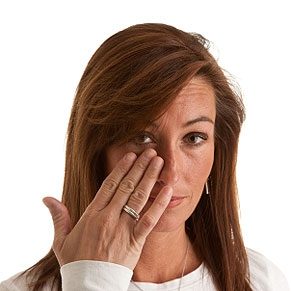7 Ways to Prevent Makeup Allergies
Even if you’ve used cosmetics for years with no problems, one or more ingredients can still trigger an allergic reaction. Your body may build up sensitivities to these ingredients, causing your immune system to overreact suddenly, producing allergy symptoms. Makeup is safe for most people, but do observe these common-sense rules.

Wash your hands and your face before applying makeup. It’s a basic precaution.
Never use anyone else’s cosmetics. Sharing cosmetics means sharing germs. Whether the makeup belongs to your best friend or sits on a store counter for any customer to test.
Don’t apply eye makeup if you have an infection, such as conjunctivitis. Throw away all products you were using when you first discovered your eye infection.
Toss old cosmetics. Every time you open a bottle of foundation, microorganisms in the air have an opportunity to rush in. Most cosmetics have enough preservatives to kill off the bugs for about one year.
Test new cosmetics. If you tend to have allergic reactions to cosmetics, ask for free samples before buying. Products labeled “allergy-tested,” dermatologist-tested,” “nonirritating,” or “hypoallergenic” may or may not help you avoid the ingredients that bother you. No federal regulations govern the definitions of any of those terms.
Apply mascara with care. Use it only on the outer two-thirds of the lashes; do not start at the roots. And never apply eyeliner to the inner eyelid margins. Use it only above the eyelashes of the upper lid and below the eyelashes of the lower lid. Contact lens wearers should avoid frosted eye shadow. The iridescent particles can flake, get in the eyes, and attach themselves to the contact lens, causing enough friction to scratch the cornea.
Don’t be misled by the word “natural”. If you have an allergy to the “natural” ingredient, you could have an allergic reaction. For instance, lanolin, extracted from sheep wool, is an ingredient in many moisturizers and a common cause of contact dermatitis.



